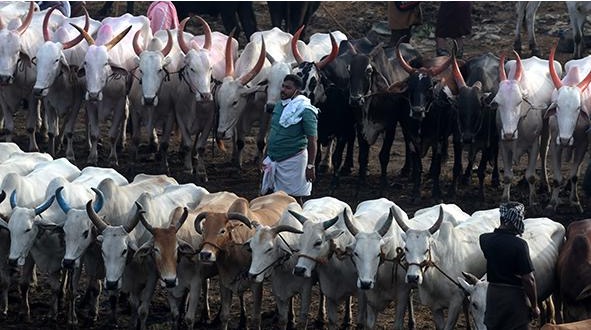According to the recently released Basic Animal Husbandry Statistics 2022, the livestock sector had a share of 30.13 per cent in agriculture, at constant prices. India has the largest population of livestock and is a world leader in production of milk, meat, eggs, etc. But it lags in terms of productivity and exports.
By leveraging livestock, small and marginal farmers can add value to crops through manure, increase their incomes significantly irrespective of the season, and ensure sustainable agricultural practices. Further, doubling of farmers’ income may be achieved through the following policy measures:
Sustainable agri-business models: Farmer can look at secondary agriculture, by using their own raw material/resources to create a value added product, for instance, jaggery making unit run by a sugarcane cultivator.
Alternatively, farmers may follow the successful 3-tier co-operative model of AMUL (integrating production and collection of milk at village level, storage at district level, and processing, marketing & distribution at state level). Further, farmers may adopt hub and spoke model for decentralized production and centralized on-line marketing of meat and sea foods.
Integrated livestock farming: By opting for integrated livestock farming (two bullocks, one cow, one buffalo, goats, poultry, and ducks of 10 each, along with cultivation of crops), farmers in a tribal area in Gujarat had a cost-return ratio of 1:2.40 times and generated gainful employment of 316 days in a year. This model not only provides nutritional bio-security but also facilitates bio-diversity wherein dung and urine of animals become manure for soil fertility.
Export orientation: India exported livestock products of ₹30,953 crore in 2022 as against ₹7,547 crore in 2010 with a CAGR of 9.42 per cent. The share of buffalo meat was 80 per cent of these exports, as it has robust demand in the global markets due to its lean in character and near organic in nature. However, India does not figure among the top exporters of livestock products mainly due to high cost of logistics, limited value addition, non-tariff barriers, issues related to quality, sanitary and phytosanitary standards.
Therefore, the farmers need to team up with Agricultural and Processed Food Products Export Development Authority (APEDA) and use quality testing services and residue monitoring done in the 220 recognised labs spread across India.
The government can synergise the collaborative efforts of various Ministries, APEDA, National Dairy Development Board, Food Safety and Standards Authority of India, Export Promotion Councils, commercial banks, etc. to boost export of livestock and its products, especially organic produce. Going forward, livestock farmers should create an export basket of low volume and high value commodities with Geographical Indication tag such as Kadaknath chicken, wool from Angora rabbit and Osmanabadi goat’s milk as health elixir.
Special efforts are required to develop breeding centres, cold storage chain infrastructure, and packaging and labelling agencies to effectively compete in the international markets.
Source : The Hindu Business Line July 13th 2023 The writer is M Srikanth Director, Centre for Agri-Business Management, MANAGE, Hyderabad. Views expressed are personal.

